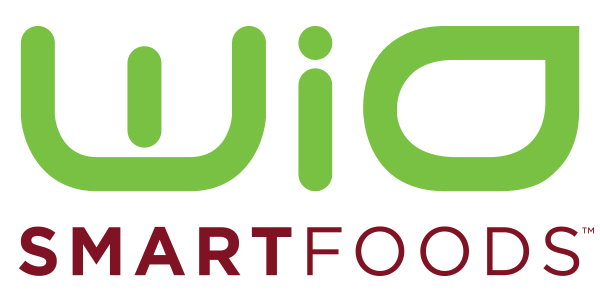Understanding and managing cravings preserves our physical health, but it's equally crucial for maintaining mental well-being and emotional balance.
Cravings are a universal experience, often posing a significant challenge for anyone trying to maintain a healthy diet. Whether it's the mid-afternoon desire for something sweet or the late-night yearning for salty snacks, cravings can derail the best of dietary intentions. These intense desires for specific types of food lead us to eat impulsively and undermine our health goals.
The foods we crave, while momentarily satisfying, may not always provide the nutrients our bodies need. Instead, they may lead to a cycle of spikes and dips in blood sugar, which affect our energy levels and mood, leading to further cravings in a challenging loop.
Making strategic healthy meal and healthy snack choices helps manage and even prevent these cravings. By choosing nourishing and satisfying foods, we stabilize our energy levels, enhance our mood, and strengthen our mental focus.
This proactive approach supports our physical health and contributes to a more balanced emotional state, empowering us to make thoughtful decisions about food without feeling deprived.
In this blog, we will explore effective strategies for understanding the root causes of cravings and making informed choices that help maintain a healthy, balanced diet. Through mindful eating and planned meals, we address both the physiological and psychological aspects of cravings, leading to a healthier, more satisfying lifestyle.
Understanding cravings
Cravings are intense desires for specific types of food, distinct from the natural physical sensation of hunger, which signals that your body needs fuel. Cravings may arise suddenly and demand specific tastes, such as salty, sweet, or fatty foods, which don't necessarily align with your body's energy requirements.

What drives cravings?
Hormones significantly impact cravings. Fluctuations in leptin and ghrelin, which regulate appetite, along with stress-induced increases in cortisol, can intensify cravings for comfort foods.
Cravings may also be a form of emotional self-soothing during times of stress, sadness, or boredom. Consuming specific foods can temporarily boost mood-enhancing chemicals like serotonin and dopamine in the brain.
Sometimes, cravings stem from a lack of certain nutrients. For instance, a craving for chocolate may indicate a magnesium deficiency, while craving ice could suggest an iron deficiency.
Recognizing whether you are dealing with true hunger or simply a craving is crucial. This understanding allows you to make choices that support your long-term health and well-being, helping you manage cravings effectively and maintain healthy meal and snack choices.
Common cravings and their triggers
Cravings are influenced by various factors, each tied to specific desires for particular types of food. By identifying what triggers these cravings, we are then able to develop effective strategies to manage them.
Sugar
Often, we crave sugary foods for a quick energy boost, as they provide immediate glucose. Sugar also stimulates the release of serotonin and dopamine, neurotransmitters that temporarily enhance mood and create a feeling of happiness.
Salt
Cravings for salty foods may signal stress or dehydration. Sodium helps the body retain water and maintain fluid balance. Stress may disrupt the mineral balance, triggering a desire for salty items.
Carbohydrates
Cravings for carbohydrates, particularly complex ones like bread or pasta, often indicate low serotonin levels. Consuming carbs boosts serotonin production, enhances mood, and provides comfort during stress.
Triggers of cravings
Stress
A key trigger for cravings, stress elevates cortisol levels, which may heighten appetite and prompt cravings for quick energy or comfort foods.
Lack of sleep
Poor sleep disrupts ghrelin and leptin, hormones that regulate hunger and satiety, leading to increased appetite and cravings for energy-dense foods.
Dietary habits
Regular consumption of high-sugar, high-fat, or salty foods condition the brain to frequently crave these foods. A lack of dietary variety or specific nutrients also triggers cravings.
Emotional state
Emotions significantly affect eating behaviors, with boredom, sadness, joy, or anxiety all capable of triggering cravings as eating becomes a coping mechanism or a way to enhance feelings.
Understanding the triggers and underlying reasons for common cravings helps you tailor your diet to be more balanced, improve sleep patterns, manage stress, and be mindful of emotional states to better control cravings. This holistic approach helps manage cravings and contributes to a healthier lifestyle overall.
Strategies for managing cravings
Managing cravings successfully involves mindful eating, maintaining a balanced diet, and opting for smart substitutions. These strategies are crucial for controlling the impulses that often lead to unhealthy eating behaviors.
Mindful Eating
Being fully present and engaged during meals is important, a practice that transforms how you experience food. Start by eliminating distractions like TVs and phones; this helps you focus entirely on the meal and enhances your eating experience.
Chew your food thoroughly to aid digestion and to recognize when you are full, preventing overeating more accurately. Pay close attention to your food's texture, smell, and taste, which can significantly increase meal satisfaction.
Make it a habit to assess your hunger levels before eating and midway through your meal. This helps you avoid eating out of habit or boredom and ensures that you eat based on your body's needs.
Balanced diet
A nutrient-rich diet is essential for preventing deficiencies that often trigger cravings. To achieve this, make sure each meal includes a diverse mix of foods such as fruits, vegetables, whole grains, lean proteins, and healthy fats. This variety ensures you receive a broad spectrum of nutrients necessary for optimal health.
Planning your meals in advance for the week also helps you effectively balance macronutrients and micronutrients, ensuring each meal contributes to a well-rounded diet. Additionally, adhering to a regular eating schedule stabilizes your blood sugar levels, which helps curb cravings and prevent unexpected spikes in hunger.
Smart substitutions
When cravings strike, selecting healthier alternatives can satisfy your desires without derailing your dietary goals. For a sweet treat, opt for dark chocolate instead of milk chocolate; dark chocolate not only contains higher levels of antioxidants and lower sugar content but also offers magnesium, which help reduce stress.
If you're craving something savory, choose lightly salted almonds or sunflower seeds instead of chips. These nuts and seeds are lower in sodium and provide beneficial, healthy fats and proteins, satisfying hunger more effectively and sustaining your energy levels longer.
For those with a sweet tooth, consider swapping processed sugary snacks for fresher, more nutritious options like sliced apples with almond butter, Greek yogurt sweetened with a drizzle of honey and topped with a sprinkle of cinnamon, or a nourishing smoothie made with spinach, banana, and a scoop of protein powder.
It’s important to avoid sugary soda or sweetened fruit juices. Instead, opt for the hydration hero — water!
These alternatives to highly processed foods offer essential vitamins and minerals, contributing to your overall health while still curbing your cravings.
These practices help you respond to your body's genuine hunger signals, prevent nutritional shortfalls that lead to cravings, and allow indulgence that aligns with your health goals. This comprehensive approach lays a solid foundation for a healthy, balanced diet, empowering you to make informed food choices.

Planning Healthy Meals and Snacks
Effectively managing cravings is easier when you have a plan for meals and snacks that are both satisfying and nutrient-rich. Careful planning prevents hunger-driven decisions, supports steady energy levels throughout the day, and helps maintain a balanced diet.
Tips for planning nutrient-rich meals
Balance food groups
Each meal should include proteins, fats, carbohydrates, and plenty of fiber-rich vegetables and fruits to aid digestion and enhance satiety.
Pre-plan your meals
Dedicate time each week to plan your meals. This helps in buying the right ingredients and avoiding less healthy, impulsive choices. Utilize meal planning apps or a simple notebook to organize your ideas.
Batch cooking
Prepare large portions of versatile ingredients like proteins or grains at the week's start. This allows you to mix and match various meals, saving time and reducing stress from last-minute meal prep.
Example meal and snack ideas:
Breakfast: A low-carb protein shake with banana or mixed berries.
Lunch: Try a WiO SmartPizza for a quick, keto-friendly meal.
Dinner: There are plenty of high-protein dinner options, like the delicious chicken SmartBurrito, to round out your diet for the day.
Snacks: An apple with almond butter or a few corn chips with fresh pico de gallo may satisfy you until your next meal.
By carefully selecting and planning your meals and snacks, you will effectively manage cravings, ensure nutritional adequacy, and enjoy satisfying meals that discourage less healthy snacking habits.
Using technology and resources
In today's digital age, technology is a crucial ally in managing dietary habits and cravings. Various apps and online platforms offer valuable resources for tracking eating patterns and providing the support needed to make healthy choices.
Several apps are designed to enhance your understanding of dietary habits and address cravings effectively by analyzing your food intake and helping you be more aware of what you are eating.
Support groups and online communities are vital in providing encouragement and accountability. Individuals share experiences and support each other in managing eating habits.
Utilizing these technological tools and resources can greatly enhance your ability to manage cravings and maintain healthy dietary practices. They offer the data to understand eating habits and the psychological support crucial for long-term success, forming a comprehensive approach to dietary management in the digital era.
When to seek professional help for managing cravings
While cravings are typically common, they may sometimes signal underlying health issues that necessitate professional intervention. Recognizing when to seek help is vital for maintaining your health and well-being.
You should consider professional assistance if you experience:
- Frequent, Intense Cravings: If cravings are so persistent and intense that they disrupt your daily activities or cause significant distress, they might indicate an underlying problem.
- Loss of Control: If you find yourself unable to control your eating when cravings strike or if you eat much more than intended, these could be signs of an eating disorder.
- Impact on Physical Health: Regular overeating due to cravings that adversely affect your health, such as rapid weight gain, high blood pressure, or diabetes, requires professional attention.
- Emotional Distress: Severe anxiety, depression, or guilt from dealing with cravings are serious signs that you need to speak with a professional who will provide support and coping strategies.
Types of professionals who can help
Several health professionals offer support for managing cravings, especially when linked to more complex issues:
Nutritionists and dietitians
These experts help stabilize your blood sugar levels and ensure you receive the necessary nutrients, which helps reduce cravings and supports healthy weight management.
Therapists and psychologists
Useful for addressing the emotional or psychological aspects of cravings, these professionals employ therapies like cognitive-behavioral therapy (CBT) to help develop healthier coping mechanisms.
Psychiatrists
If your cravings are part of a broader mental health condition, psychiatrists provide a combination of medication and psychotherapy for effective management.
General practitioners
Your primary care doctor is a good starting point for diagnosing the cause of your cravings and can refer you to specialists for further treatment.
If you recognize any serious signs, promptly seek professional help. Begin with your primary care provider, who can evaluate your symptoms and possibly refer you to a specialist. Remember, seeking help is a sign of strength and a crucial step toward taking control of your health and enhancing your quality of life.
Cut your cravings with WiO Smart Foods
While understanding your cravings and implementing strategies like mindful eating and meal planning are vital, choosing the right foods to satisfy those cravings healthily is just as important. WiO Smart Foods offers a range of products designed to meet these needs without compromising taste or nutritional value.

Whether you're battling sugar cravings or looking for a healthy snack option, WiO Smart Foods provides delicious, low-carb, zero-fat and sugar alternatives that support your dietary goals. Embrace a healthier lifestyle with WiO Smart Foods and experience how satisfying managing cravings truly is.

Dive into our variety of options and find your new favorite way to stay on track with your health and diet.





